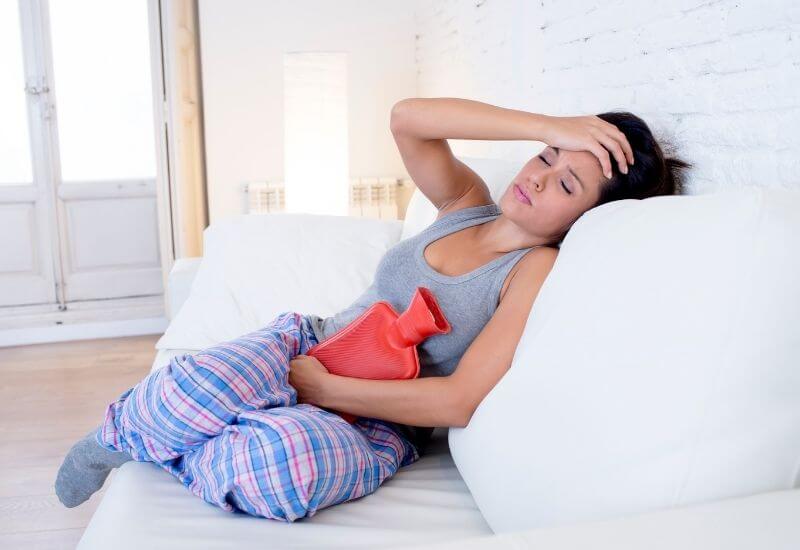If you are reading this, you or someone you know probably struggles with migraine disorder. In fact, migraines are so prevalent that they affect nearly 40 million people in the United States and 1 billion worldwide – that’s an astonishing 14% of the entire world’s population! But even though migraines don’t discriminate when it comes to age, race, or social status, there is a clear gender divide among migraineurs. According to the Migraine Research Foundation, 85 percent of all chronic migraine sufferers are women, and females also report having longer and more severe attacks than their male counterparts.
But why are women three times more likely to experience migraine and most types of headaches for that matter – than men? In an interview with the Washington Post, Janine Clayton, director of the Office of Research on Women’s Health at the National Institutes of Health (NIH), explains that “we don’t have the answer for why migraines are more common in women than men, but women are more susceptible to every pain condition than men.”
Many factors could explain why migraines are disproportionally more prevalent among women than men, but the most likely answer points towards hormones. Women go through a multitude of hormonal changes throughout their lives, which not only impact their sexual development and reproductive capacities but also play an essential role in how their brain develops and responds to pain.
Migraines can start as early as 18 months of age, and before puberty, boys are more likely to get them than girls. As adolescence approaches, however, this trend shifts drastically; by the age of 17, only 8 percent of boys report experiencing at least one migraine in contrast to 23 percent of girls who had suffered at least one as well. Symptoms, triggers, and severity continue to evolve with age, but migraine incidence usually starts dwindling down after the age of 40 or near the onset of menopause.
In a 2018 study published by the journal Frontiers in Molecular Biosciences, researchers were able to identify changes in estrogen levels as a determining factor for making certain nerves in the brain more sensitive to migraine triggers. However, the authors also pointed out that the relationship between hormones and migraines is very complex, and more research is needed to establish a definite connection.
Hormonal changes are a common occurrence among women. Hormone levels fluctuate before, during, and after a woman’s menstrual cycle as well as during pregnancy, breastfeeding, and menopause. But medications, environmental factors, stress, and even certain types of foods can also impact estrogen levels.
Estrogen is one of the two main sex hormones in the female body. Together with progesterone, estrogen is responsible for giving women their characteristic female features, controlling sexual and reproductive development, and running the menstrual cycle. Yet hormone levels rarely stay the same; during the average woman’s menstrual cycle, estrogen levels rise and fall, with peak levels occurring during ovulation and then falling again before and over the course of her period.
Menstrual migraines occur only in women, and they happen exclusively during their period. According to the American Migraine Foundation, for a woman to be diagnosed with these types of migraines, she must experience at least one attack during menstruation and have them in at least two out of every three menstrual cycles. Menstrual migraines don’t occur at other times during the month. However, women can get both menstrual and non-menstrual migraines.
Doctors believe that the drastic decrease in estrogen levels after ovulation makes some women more prone to getting migraines. In a research study published in the scientific journal Neurology in 2006, MacGregor and colleagues observed that among most women with menstrual migraines, attacks occurred during the first day of their period – which is when estrogen levels are at their lowest. However, migraine incidence was significantly lower during times of higher estrogen levels, supporting the theory of estrogen “withdrawal” as a common migraine trigger among women.
Does Birth Control Prevent Menstrual Migraines?
Menstrual migraines affect about 60 percent of women with migraines, but they seem to stop or significantly decrease throughout pregnancy and after menopause. In fact, one research study found that 80 percent of participants suffering from migraines reported zero migraine attacks during their third trimester of pregnancy.
The use of oral contraception as a menstrual migraine treatment has always yielded a mixed bag of results; some women have been successful in treating their menstrual migraines with prescription birth control, while others report increased or worsening symptoms. It is important to note, however, that oral contraceptives may elevate some women’s risk of suffering from a stroke or a cardiovascular event. Additionally, women who suffer from migraines with aura also seem to be more at risk of developing blood clots (deep vein thrombosis) while taking hormonal contraceptives.

Fortunately, studies have shown that women who suffer from menstrual migraines can benefit from nutritional supplements like:
Magnesium 360 mg/day
Riboflavin (Vit B-2) 400 mg/day
Feverfew 100 mg/day
PLUS Hormone and Blood Sugar Modulators
Pyridoxine Hydrochloride (vitamin B-6) 100 mg/day
Chromium Picolinate
Vitamin B6 1,000 mcg/day
L-Theanine 100 mg/day
Chasteberry extract 275 mg/day
D-Biotin 15 mg/day
All of the ingredients above can be found in one product and help to balance hormone and blood sugar fluctuations (well-known migraine triggers), while addressing PMS and PCOS symptoms as well.


